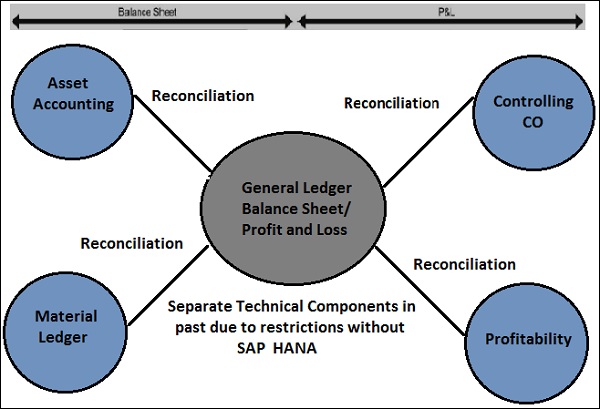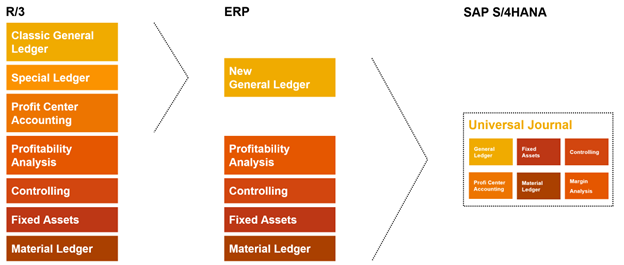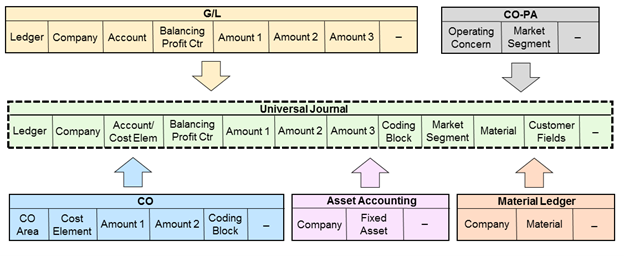 Anthony Cecchini is the President and CTO of Information Technology Partners (ITP), an ERP technology consulting company headquartered now in Virginia, with offices in Herndon. ITP offers comprehensive planning, resource allocation, implementation, upgrade, and training assistance to companies. Anthony has over 20 years of experience in SAP business process analysis and SAP systems integration. ITP is a Silver Partner with SAP, as well as an Appian, Pegasystems, and UIPath Low-code and RPA Value Added Service Partner. You can reach him at [email protected].
Anthony Cecchini is the President and CTO of Information Technology Partners (ITP), an ERP technology consulting company headquartered now in Virginia, with offices in Herndon. ITP offers comprehensive planning, resource allocation, implementation, upgrade, and training assistance to companies. Anthony has over 20 years of experience in SAP business process analysis and SAP systems integration. ITP is a Silver Partner with SAP, as well as an Appian, Pegasystems, and UIPath Low-code and RPA Value Added Service Partner. You can reach him at [email protected].
The SAP Universal Journal brings together the once-separate components Financial Accounting (FI) and Controlling (CO) into one pool of relevant business data. This single source of truth collects all accounting-relevant transactions and makes them available to all relevant application components: Financial Accounting (General Ledger), Controlling, Asset Accounting, and Material Ledger.
Technically speaking, the SAP S/4HANA Universal Journal combines the most important fields from these components within a single line item table, which enables the components to read and process the data required for their business processes from a single location.
The advantages of having all this information in one place are evident: No reconciliation activities are needed, data redundancies are eliminated, and line items are entered only once. All of this reduces the memory footprint and increases the throughput of the system. Overall, companies can even benefit from lower TCO thanks to the Universal Journal.
Before the introduction of the Universal Journal by SAP, the components Financial Accounting (FI) and Controlling (CO) were managed separately because of technical restrictions. This made it challenging to move data into appropriate tables for reporting or storing different details in tables. Here is a figure representing this below:
Even if the principles of financial controlling and accounting are similar, these are independent processes. This necessitates the creation of a separate database table for each of these areas when aiming for the highest benefits.
Though reconciliation ledgers were used in the past to marry financial accounting and controlling, this was not enough. The S/4HANA database technology was the only logical solution that united these two components of accounting into a single physical table. With the combination into a single table, the SAP Universal Journal made it easier to read financial data and interpret it from a single point.
The Universal Journal is the single truth source because it has line-item details in its first layer. It is the table ACDOCA. Here is a diagram depicting how business accounting has changed through the years until the advent of the Universal Journal….
You have probably heard that the SAP Universal Journal is the leading innovation in Finance on SAP S/4HANA. What makes this solution universal, as its name denotes, is its versatility and unity. Unity means that the Universal Journal is a single point of truth for all your financial transactions. This negates inefficient and redundant financial reconciliations. On the other hand, versatility means that the solution is a universal key that will open the doors you need for a flexible financial block.
For instance, you can run your taxes, managerial or legal books on the same coding block and underlying data simultaneously. In so doing, the Universal Journal is a foundation of truth that you can confidently use without factoring in complicated reconciliation of your data for reports and analysis.
All financial data includes similar line items. This is a means of ensuring that diverse data types can be reconciled and the built-in capabilities in your system, like multiple currencies, are available throughout. Here are the main beneficial features of the Universal Journal:
Permanently Reconciled Financials
The Universal Journal forms the foundation of a combined accounting system where management and financial accounting data are recorded in one accounting chart. You do not need reconciliation between these two accounting data types because they are based on similar line items
- Permanent record reconciliation brings together the components below:
- Asset accounting {FI-AA}
- Profitability analysis {CO-PA}, specifically account-based profitability analysis.
- General ledger accounting {FI-GL}
- Controlling {CO}
- Material ledger {CO-PC-ACT}
Here is a figure summarizing these components:
All external and internal business transactions will be recorded on the G/L accounts. The accounts chart comprises all your income statements and balance sheet reports. The ledger supports multi-GAAP reporting to allow reporting according to diverse principles of accounting in parallel.
The whole set of account controlling entities like a cost center, internal order, and project are included in one journal entry. Secondary cost elements in the Universal Journal are included in the G/L account instead of in CO as a separate entity.
Different application components usually use similar dimensions like a fund, cost center, or profit center. As such, you do not have to redundantly store these dimensions in every component. The dimensions are integrated into your journal entry. Here are the benefits of incorporating the dimensions in your journal entry:
- Your managers can quickly determine the fixed assets that attract depreciation costs for your cost centers.
- Your G/L accountants can get down to the individual fixed assets from a balance sheet’s fixed assets account.
With the Universal Journal, you can prepare balance sheets for different dimensions using document splitting. The splitting guarantees that your journal entries are balanced. For example, you can prepare full balance sheets for each of your accounting segments.
Enhanced Reporting
With the SAP S/4 HANA Universal Journal, you will optimize your company’s financial reporting and analysis because you waste no time in time-consuming, unnecessary reconciliation activities. Here are the elements of the Universal Journal that support enhanced reporting.
- Flexible financial statement analysis
You can break down any item on your balance sheet to an entity like fixed assets. It is also possible to conduct a market segment analysis for all items on your income statement fully reconciled with your profitability reports. If you miss any data entry when recording a transaction in the Universal Journal, this data will be retrieved automatically. This allows the analysis of data according to multiple characteristics.
- Real-time profitability analysis
You need not wait for an accounting period to close so that you can analyze your profitability when using the SAP Universal Journal. There are market segments included in the Universal Journal as extras to allow the continuous analysis of a company’s profitability. For instance, when you post your salary costs in a cost center, your corresponding market segment is derived immediately for analysis. Each income statement item will have a profitability attribute that ensures your income statement and profitability data are always reconciled. You can enrich the attributes of your Universal Journal with processes like allocations and settlements.
- Cost comparability
A CO report in the Universal Journal and the costs in your income statement are based on similar underlying data so they can be directly compared. You do not have to map your G/L accounts to the cost elements or adapt your G/L to the CO version to compare costs.
- Ease of meeting your financial reporting needs
When you integrate your management and financial reporting, this boosts the chances of meeting the financial regulations relevant to your sector, like the inclusion of operating segments into your statutory reports.
- Merging of OLAP and OLTP
In most cases of SAP HANA, you do not have to replicate data to an OLAP system because the solution offers instant multidimensional access to line items. Even when you need data in your OLAP system, this data will be extracted from a single data source instead of different sources in multiple components.
Extensibility
The custom fields in the SAP S/4Hana Universal Journal have different extensibility options to maximize the solution’s benefits for organizations. Here are these extensibility alternatives.
- The ‘’classic’’ Coding Block extensions that use the CI-COBL structure and the OXK3 transactions can extend multiple processes in entries in the ACDOCA table. When you create custom fields using this method, you can use them for numerous SAP Fiori apps posting journal entries.
- The Custom Fields and Logic option on the SAP Fiori app for key users allows the local extension of your journal entries using the Journal Entry Item.
- CO-PA custom characteristics using the KEA5 transaction. With this, you can extend the CO-PA operating concern using the custom characteristics you create in the KEA5 transaction. The fields will also be generated in the ACDOCA table’s journal entries.
Thanks to the extensibility of the Universal Journal, you are not limited to the conventional financial closing processes anymore. You now have the alternatives below for closing financial records:
- Fast close that eliminates reconciliation tasks, allows running of multiple timeframes in the same period, and supports real-time execution of financial decisions.
- Soft-close that eliminates period-end tasks, derives profitability characteristics automatically from line posts, and allows you to continually close books.
- Predicted close that extends your accounting reach and enables the use of predicted actuals to forecast a period-end close.
Summary
It was only with the introduction of the SAP HANA database technology that the last logical step could be taken, namely to unite the FI and CO components into one physical table (table ACDOCA).
SAP HANA with its superior compression techniques and columnar layout is able to aggregate huge numbers of line items within seconds, making it possible to dispense with separate physical line item and totals tables in each application. Real-time integration is therefore guaranteed by design. Thanks to this technology, the Universal Journal with its centerpiece, table ACDOCA, could be developed.







